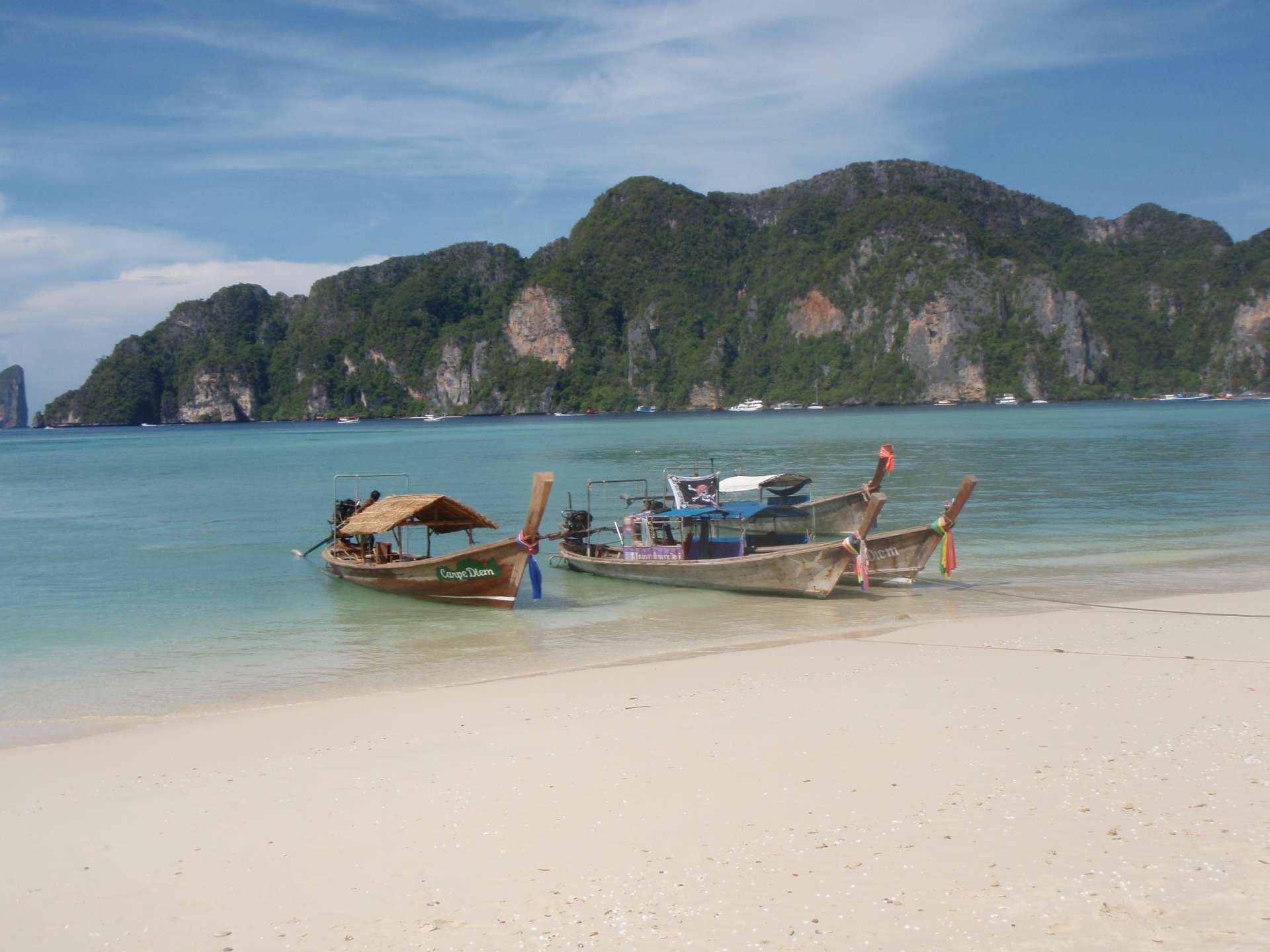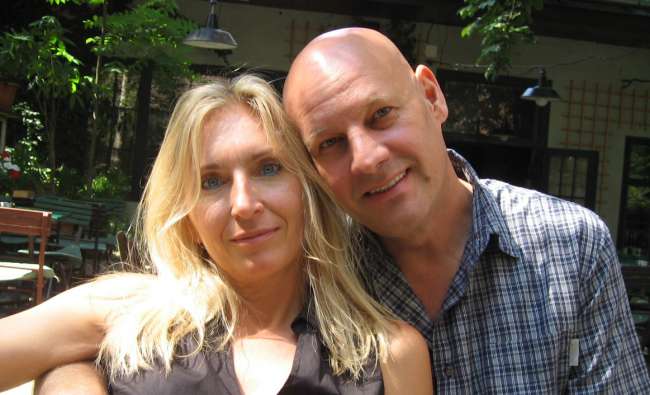Brazil: Iguaçu Falls
ਪ੍ਰਕਾਸ਼ਿਤ: 09.03.2017
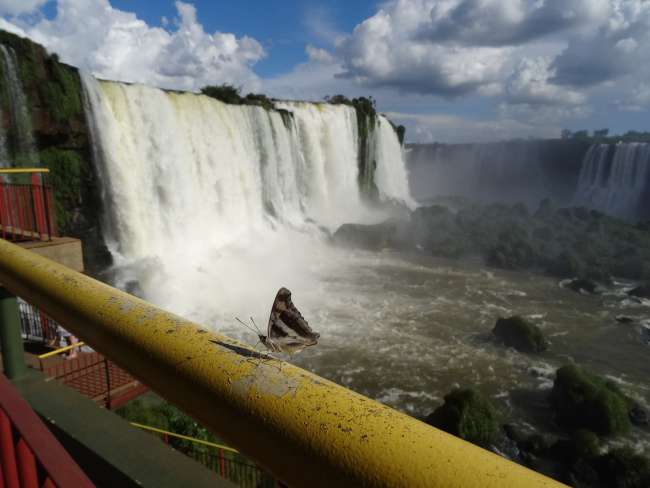
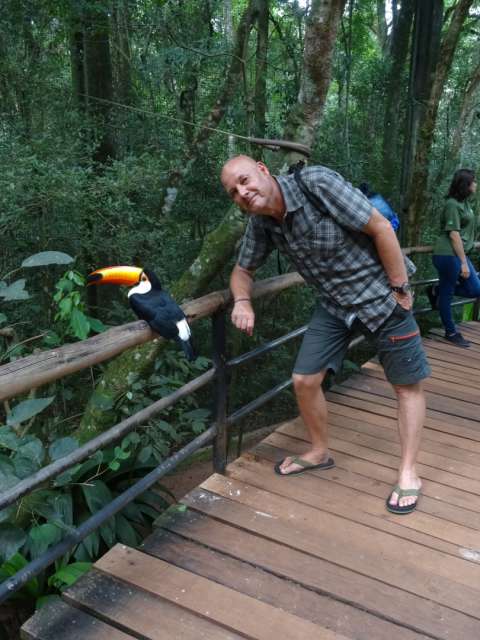

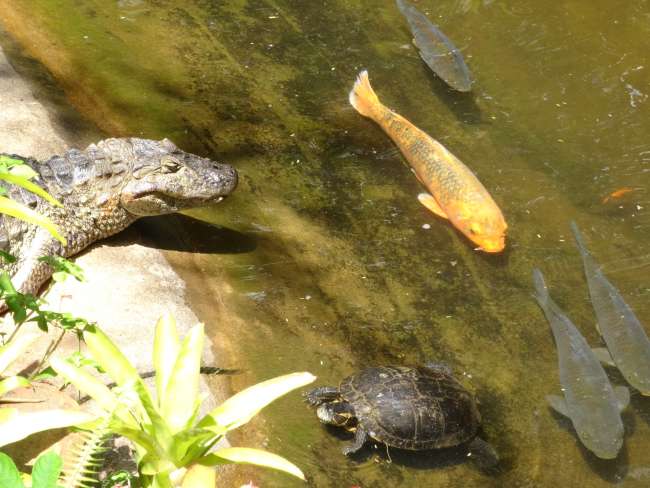
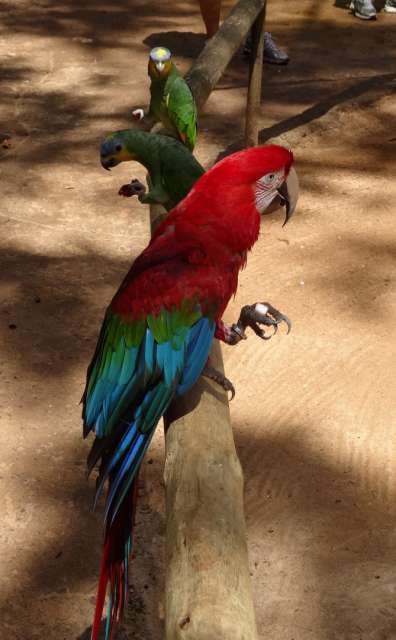
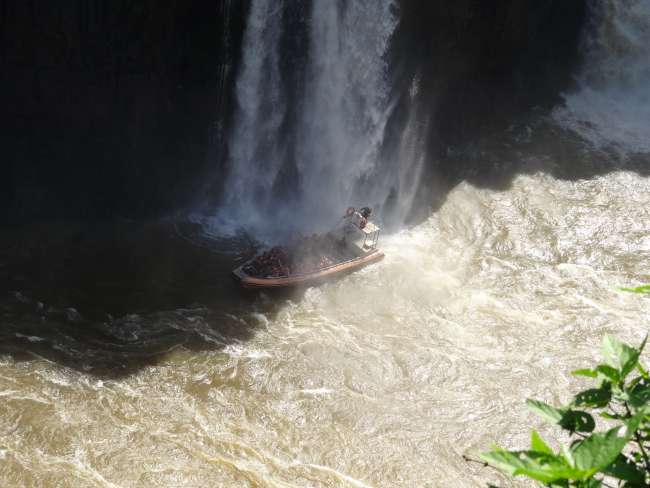


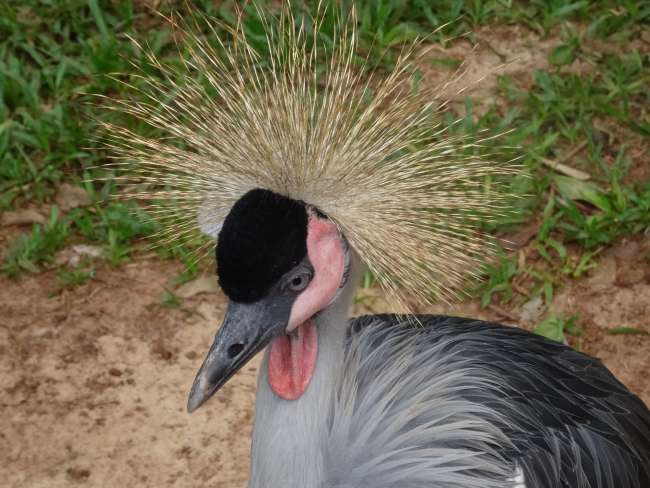
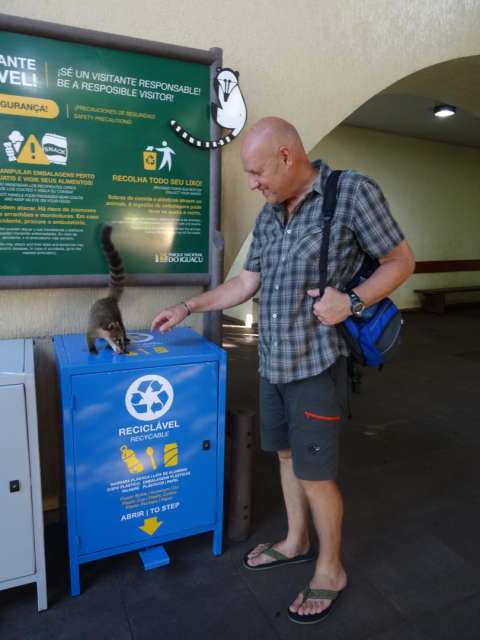
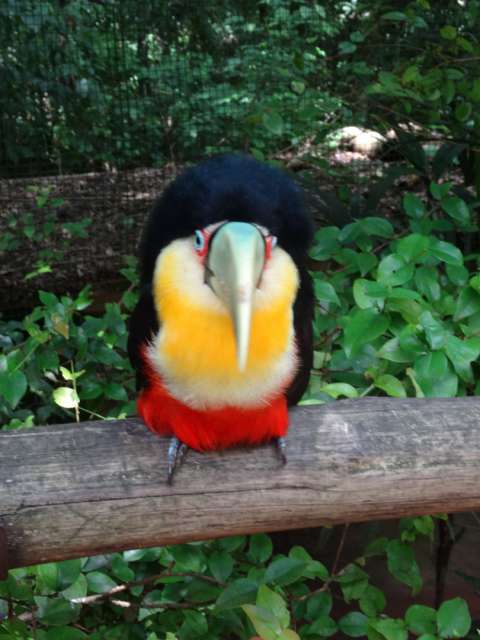
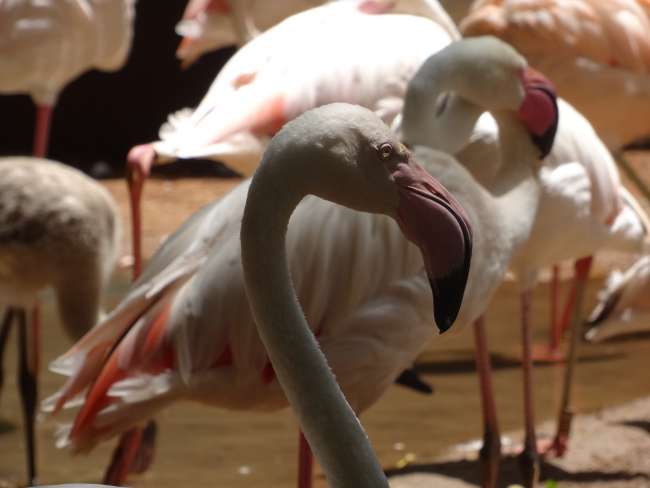
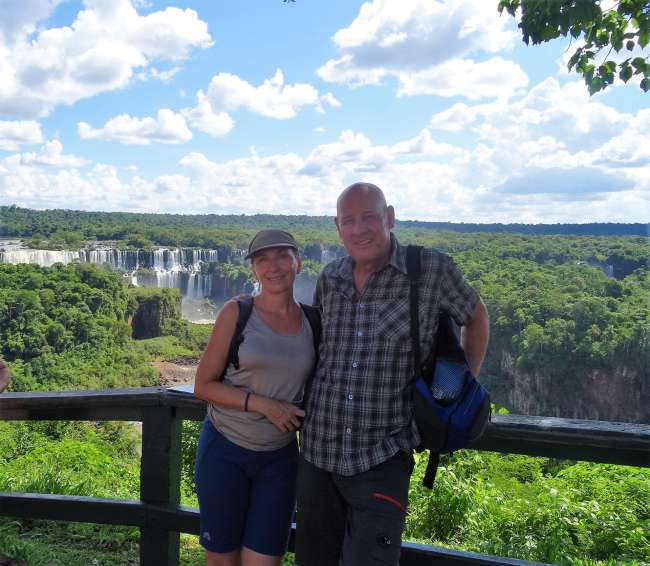
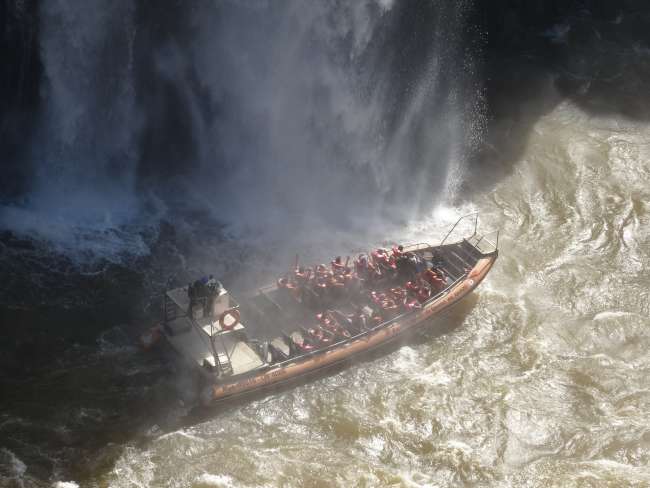
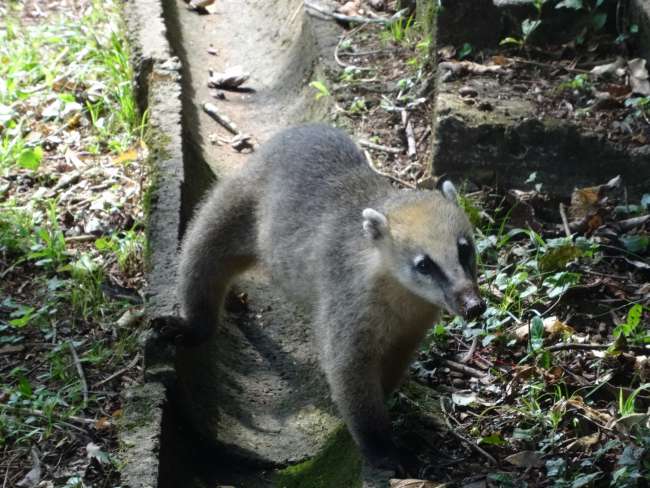
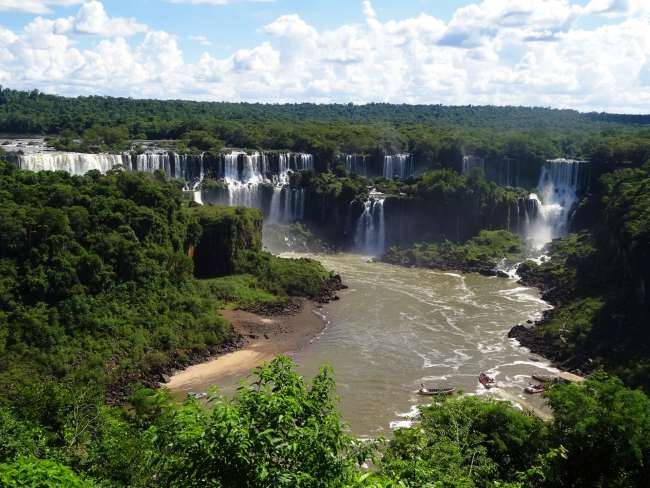
ਨਿਊਜ਼ਲੈਟਰ ਦੀ ਗਾਹਕੀ ਲਓ
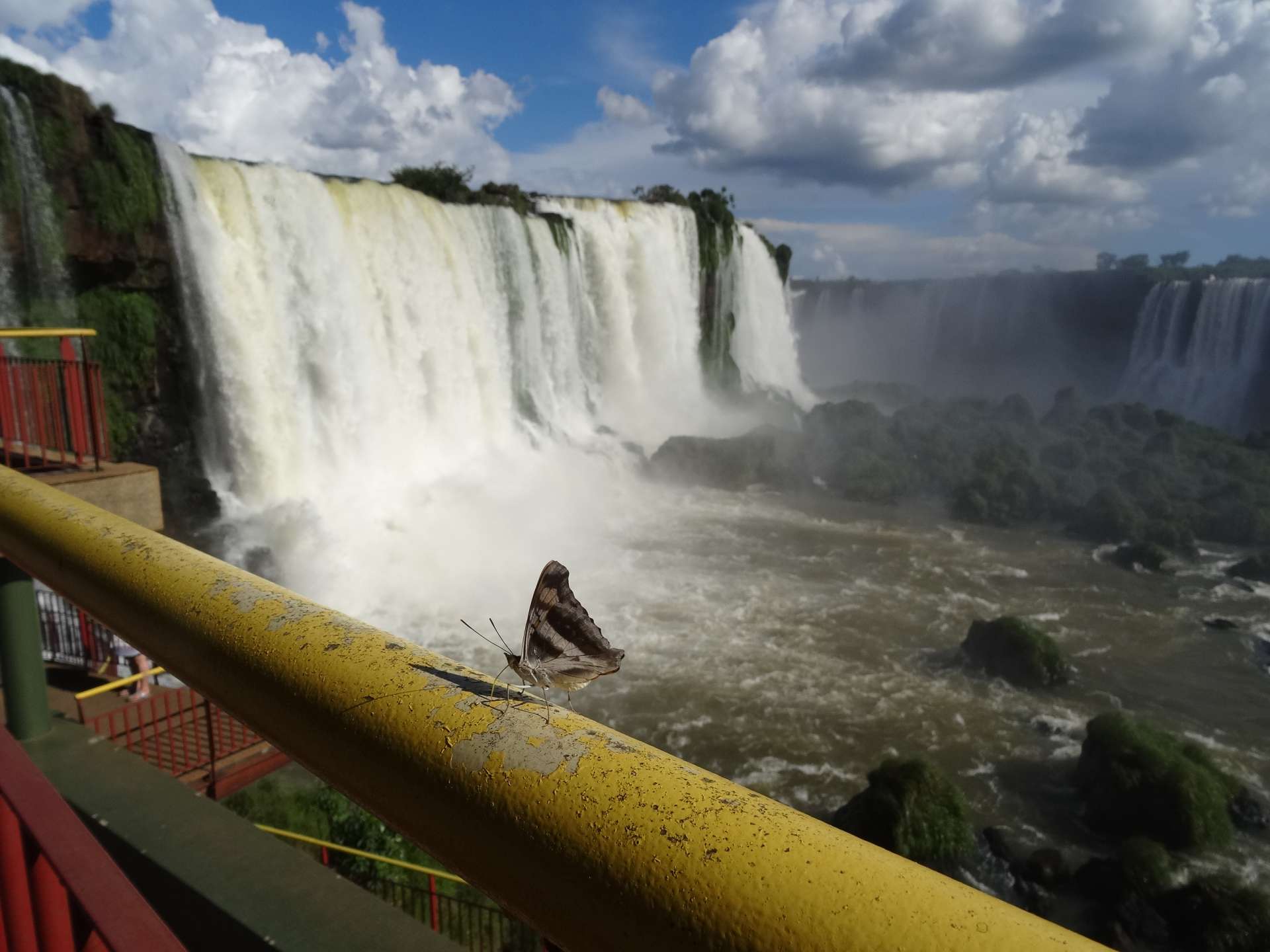
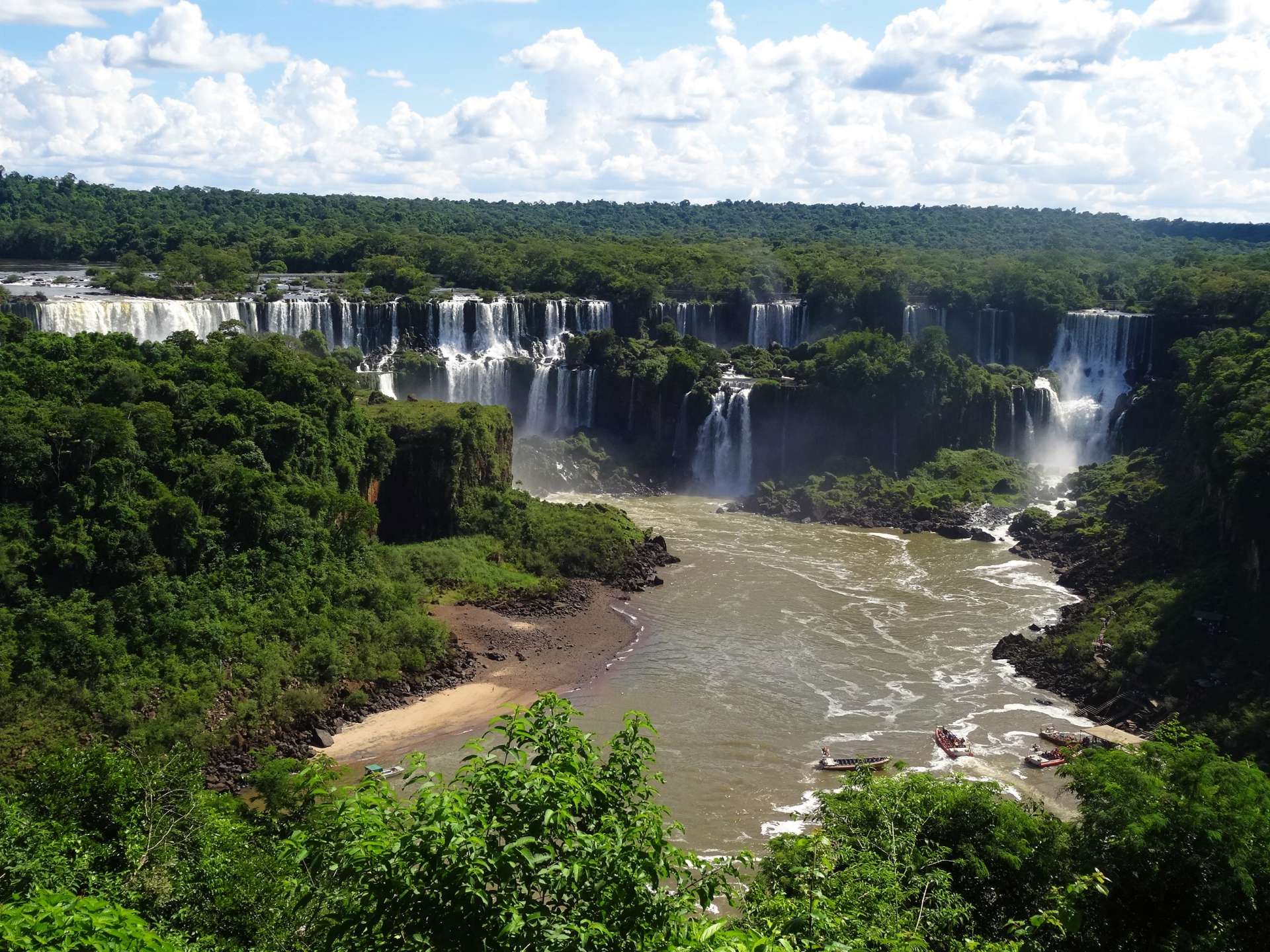
We were both really looking forward to visiting the Cataratas do Iguaçu. The largest waterfalls in the world are located in a rainforest area in a national park around the mouth of the Iguaçu River on the border between Brazil and Argentina. They consist of 20 larger and 255 smaller waterfalls. The famous Devil's Throat, or Garganta do Diablo in Portuguese, is a 150m wide and 700m long gorge.

We stayed in the nearby city of Foz do Iguaçu for three days, first visiting the Brazilian side and then the Argentine side the following day.
At the entrance of the national park on the Brazilian side, there is a bird park that is absolutely worth seeing. You can also see colorful butterflies, crocodiles, and snakes there.

Today I really want to find out...
Some of the birds almost look like mythical creatures, they are so colorful and incredible - nature is simply incomparable in beauty and diversity!
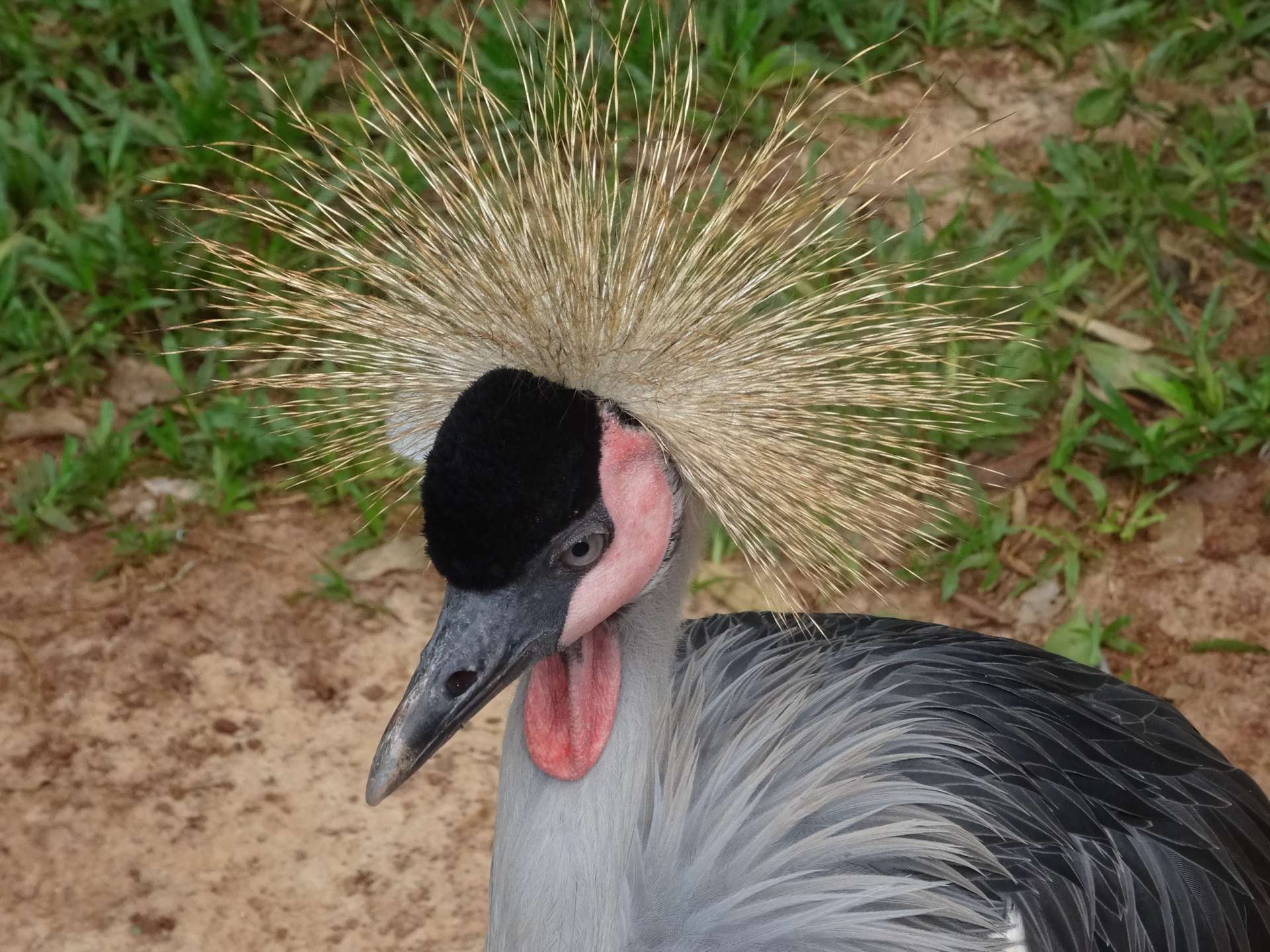
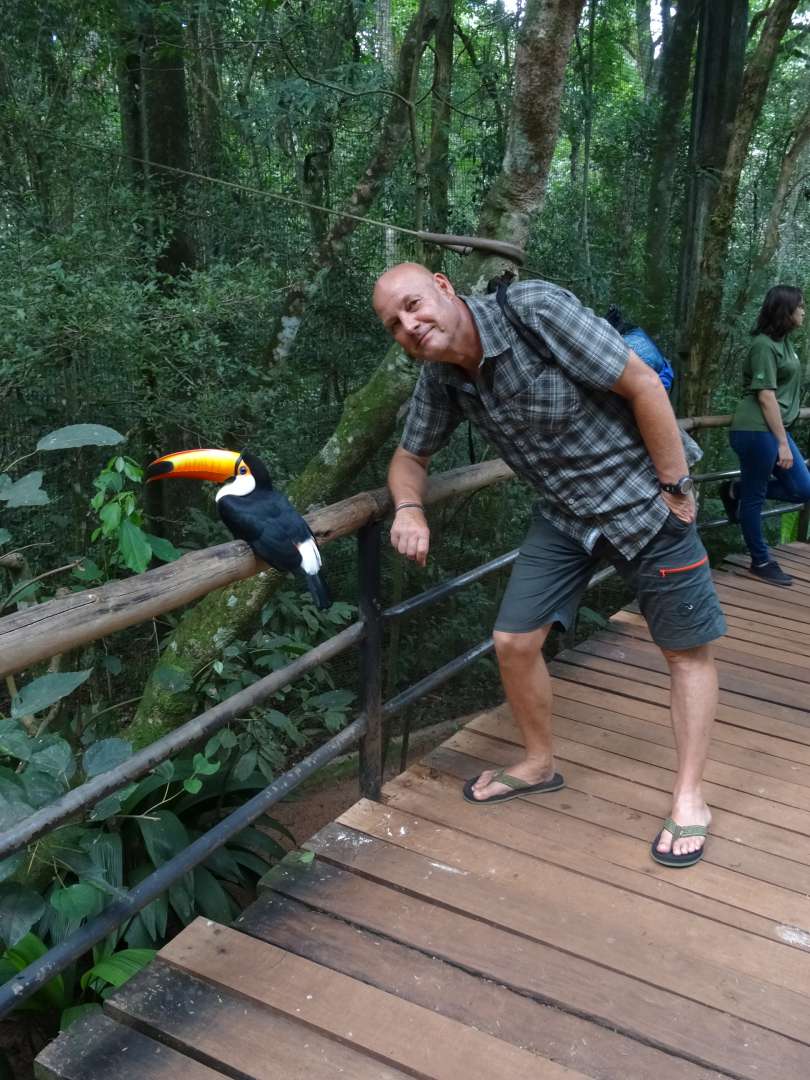
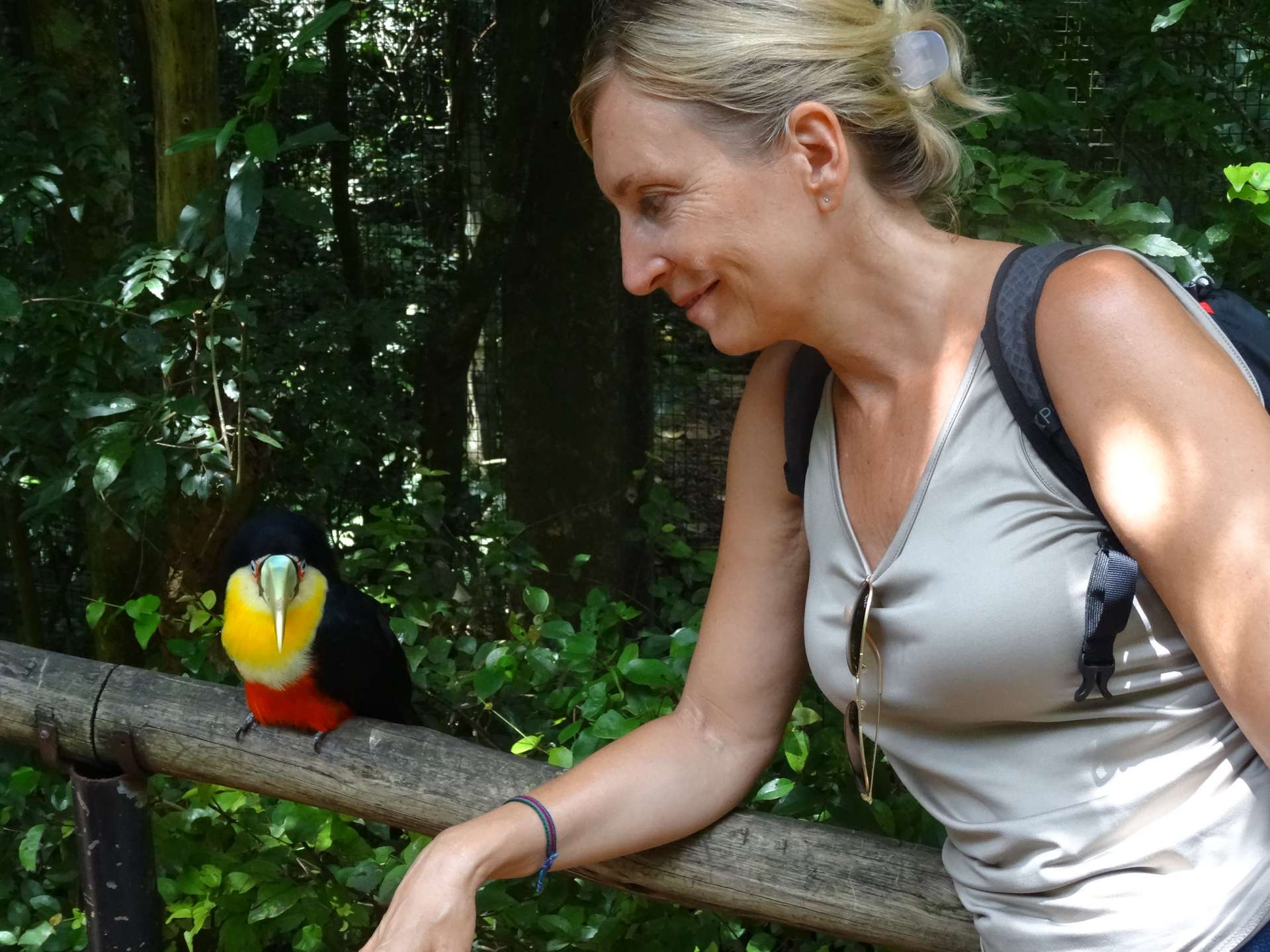
My favorite: we got along so well right from the start;)
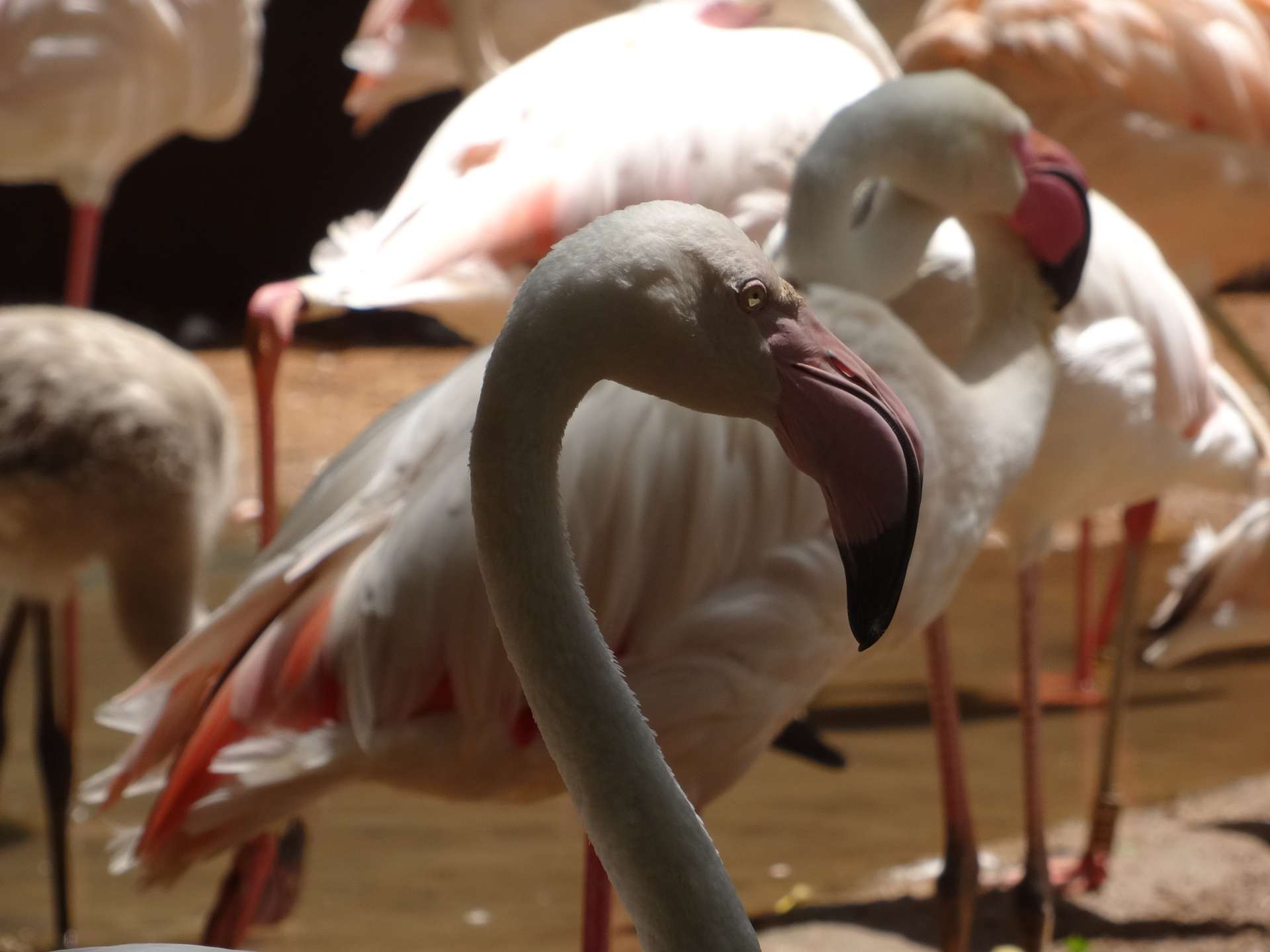
Afterwards, we continued on a very well-maintained hiking trail to catch a gigantic panoramic view, including a rainbow, of the Argentine side of the falls. We had seen waterfalls before, but the size and magnitude of these falls is incredibly impressive and breathtaking!

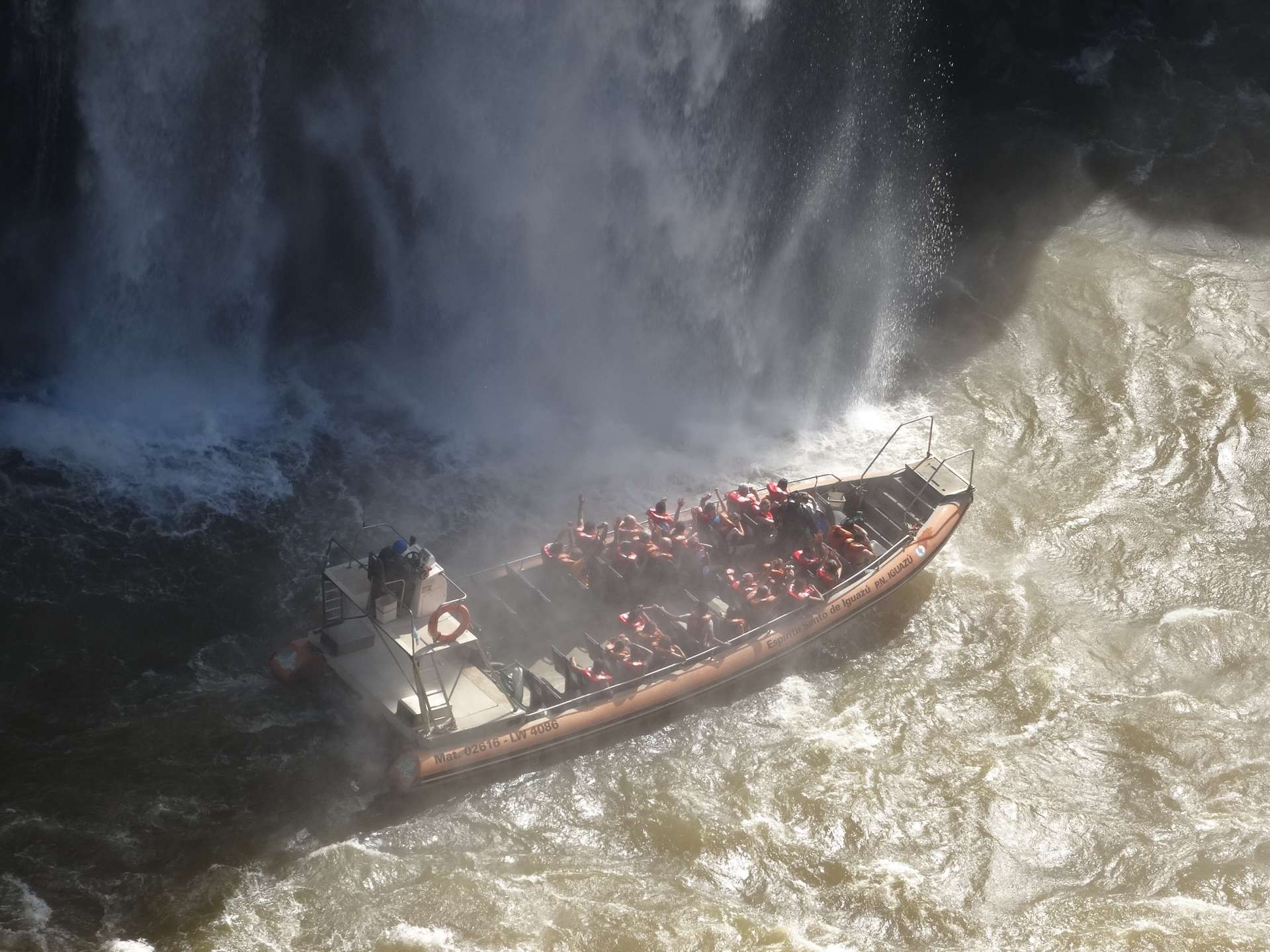
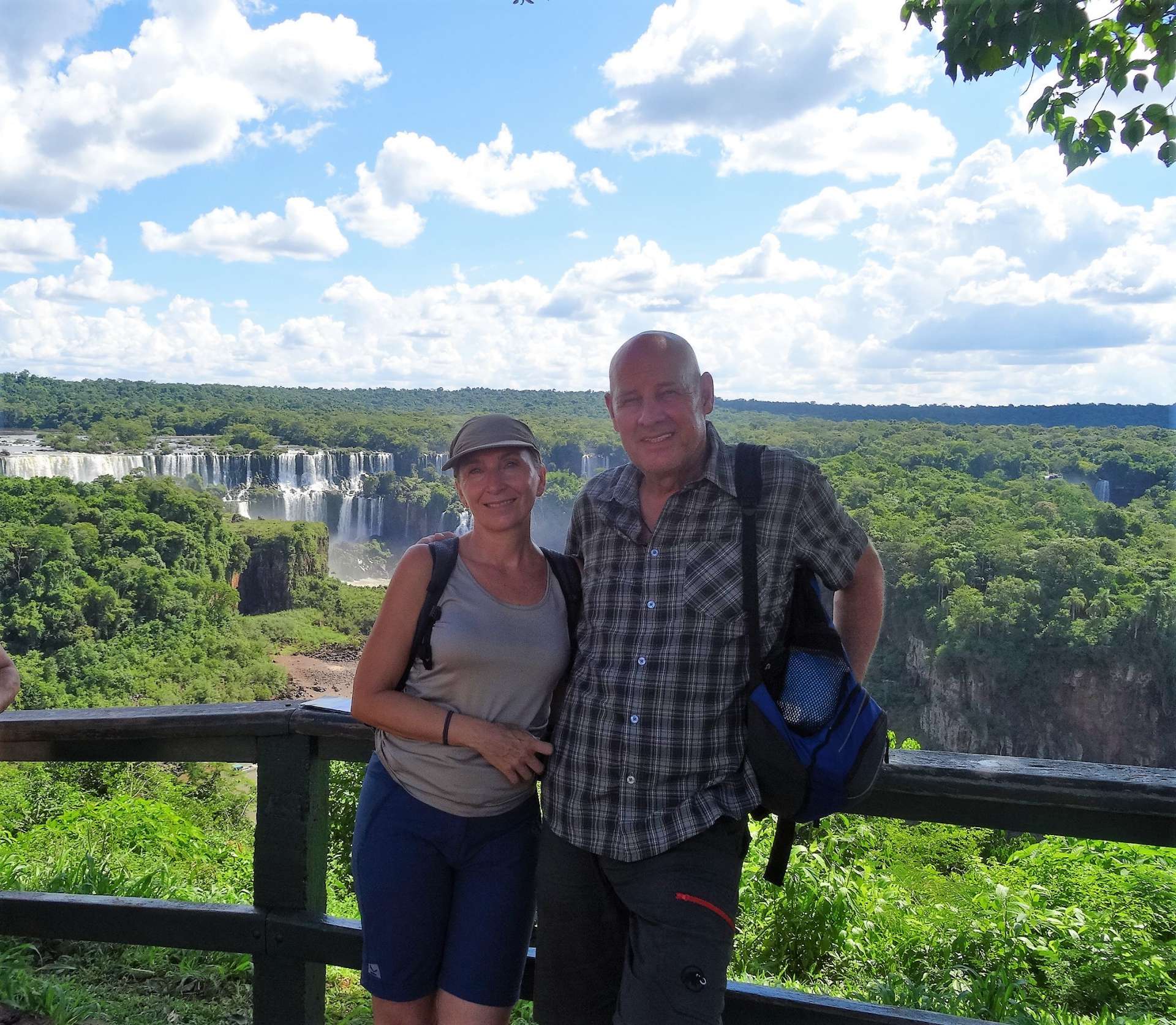
On the way, we encountered not only other tourists ;), but also lots of cute coatis.
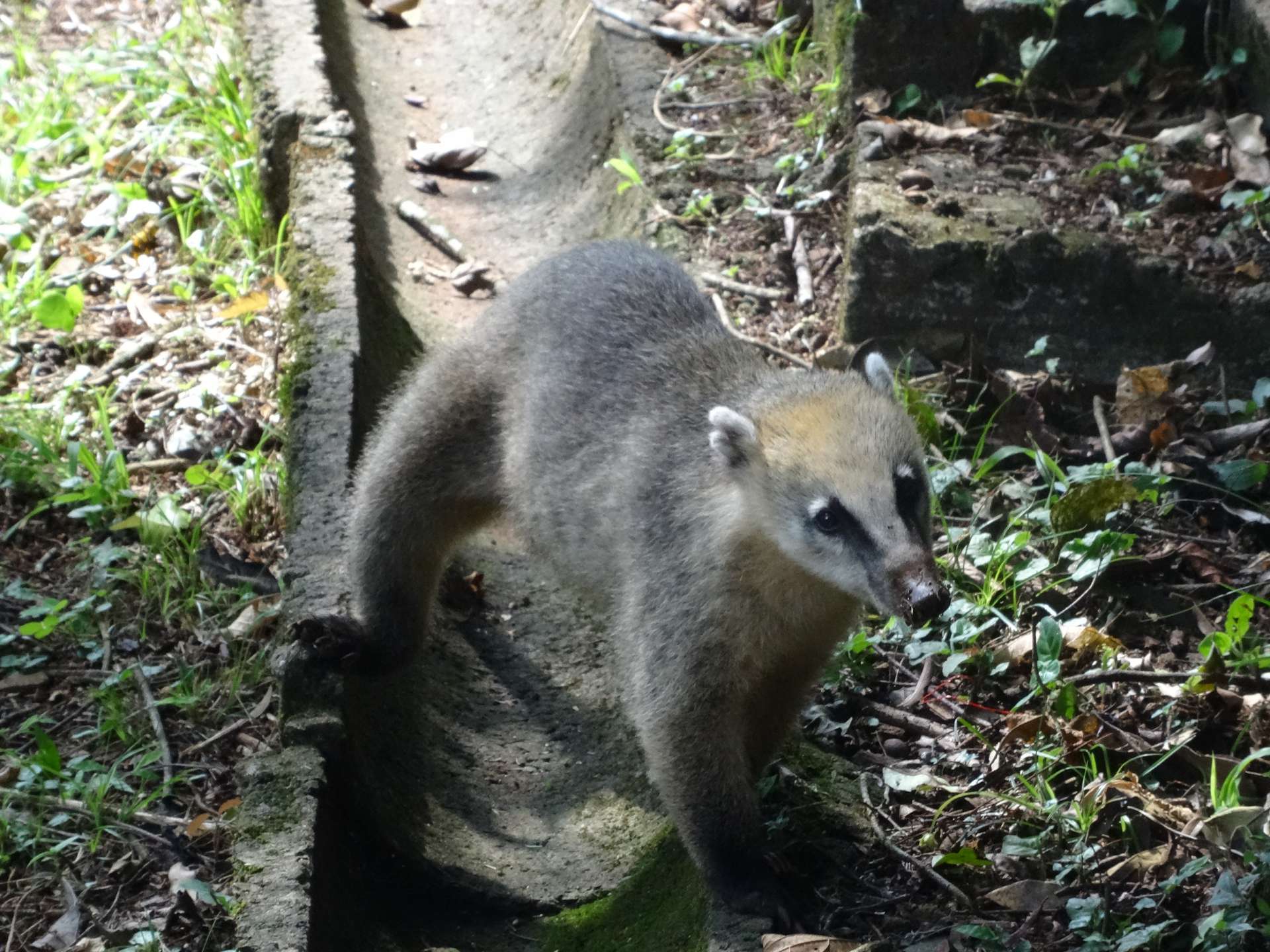
They look really cute, but they're quite clever. They have discovered that there is often delicious food to be found in the backpacks and bags of tourists, and if you're not careful, these skillful animals will take advantage of the opportunity and help themselves.
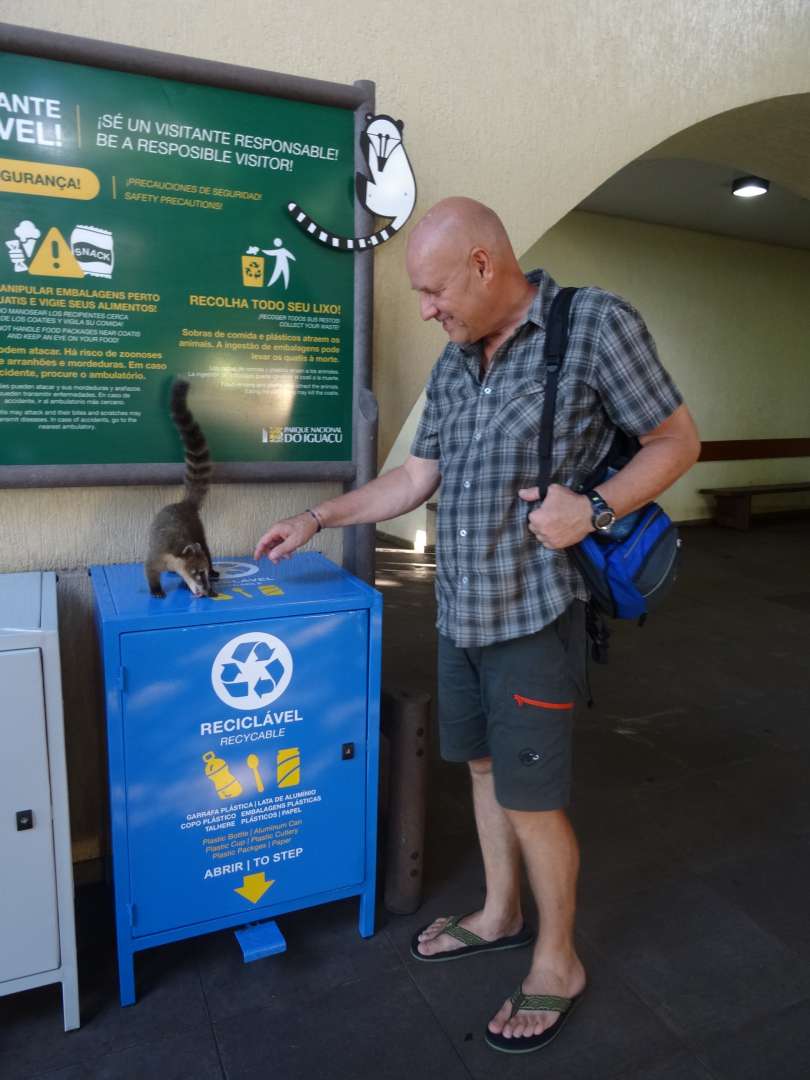
The next day, we set off early in the morning to take the bus across the border to Puerto Iguazú in Argentina to visit the national park there. The tour on the Argentine side is more demanding in terms of time and endurance, so it is recommended to start early.
I was already very excited and full of anticipation when we were on the bus, already in Argentina, and learned from an English-speaking local that the national park was closed for at least 2 days due to a 'serious incident' with an aggressive puma the day before, until the dangerous animal had been captured. We were quite disappointed to hear this, and since we had already arrived in the Argentine border town, we wanted to at least take a little walk there. However, after 30 minutes we found out that there was nothing to discover here, except for countless tourist shops that were completely uninteresting to us.
So we quickly took the next bus back to our beautiful accommodation, a hostel in a beautiful garden lovingly designed by the owner, an older lady - a paradise for butterflies (I counted 6 different species), hummingbirds, and a swimming pool. So the completely unplanned change in our daily routine turned out to be something really positive in retrospect. Because Peter was able to concentrate on his organizational tasks as an invaluable tour guide in the air-conditioned room ;) and I could enjoy watching butterflies and listening to the birdsong, and occasionally take a few laps in the pool to cool off a bit in 35-degree heat. How wonderful!!!
From the media, we learned that luckily nothing actually happened. A tourist claimed to have been 'frightened by an aggressive pose' by a puma. They now plan to relocate the dangerous animal, as otherwise the safety of tourists cannot be guaranteed. However, it should not be forgotten that this is a national park and not a theme park. We are the ones who are encroaching on the territory of the animals, but that is a different matter, of course.
As long as we were in Foz, the national park unfortunately remained closed.
Nevertheless, the days there were very nice and relaxing, albeit different than expected. But from my point of view, this is also a beautiful aspect of traveling. You learn that sometimes things that don't go according to plan can also have their advantages, or at least remain an interesting experience.
ਨਿਊਜ਼ਲੈਟਰ ਦੀ ਗਾਹਕੀ ਲਓ
ਜਵਾਬ
